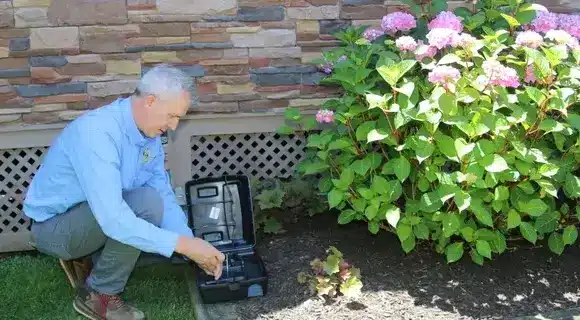


Yellow jackets are social insects that live in large colonies. Their nests are built underground or inside structural voids, such as attics and wall cavities. These nests are made from paper-like material created by chewing wood fibers mixed with their saliva. The colony is ruled by a single queen who lays eggs, while worker yellow jackets handle foraging, defense, and nest maintenance. Unlike honeybees, yellow jackets can sting multiple times and are highly aggressive when their nest is disturbed.
We follow a precise process for identifying and eliminating yellow jacket nests based on their location:
Most yellow jacket jobs come with a 30-day warranty to ensure effective elimination.
Yellow jackets are highly active during the summer and fall. If you notice a steady stream of wasps flying in and out of a hole in the ground, wall void, or structure, there is likely a nest present.
Yes. Yellow jackets are extremely aggressive and can sting multiple times. Their venom can cause severe pain, swelling, and in some cases, allergic reactions.
DIY removal is not recommended. Disturbing a nest can trigger a swarm, leading to multiple painful stings. Professional treatment ensures the nest is eliminated safely and effectively.
Yellow jackets are most active from late spring through fall, with peak colony size occurring in late summer.
Stay away from the nest and avoid any sudden movements that might agitate them. Call us for a professional inspection and treatment.
Yes. They can enter through cracks and gaps in siding or vents and build nests inside wall voids or attics.
No, honeybees are protected and beneficial pollinators. We only treat aggressive stinging insects like yellow jackets, hornets, and wasps.


